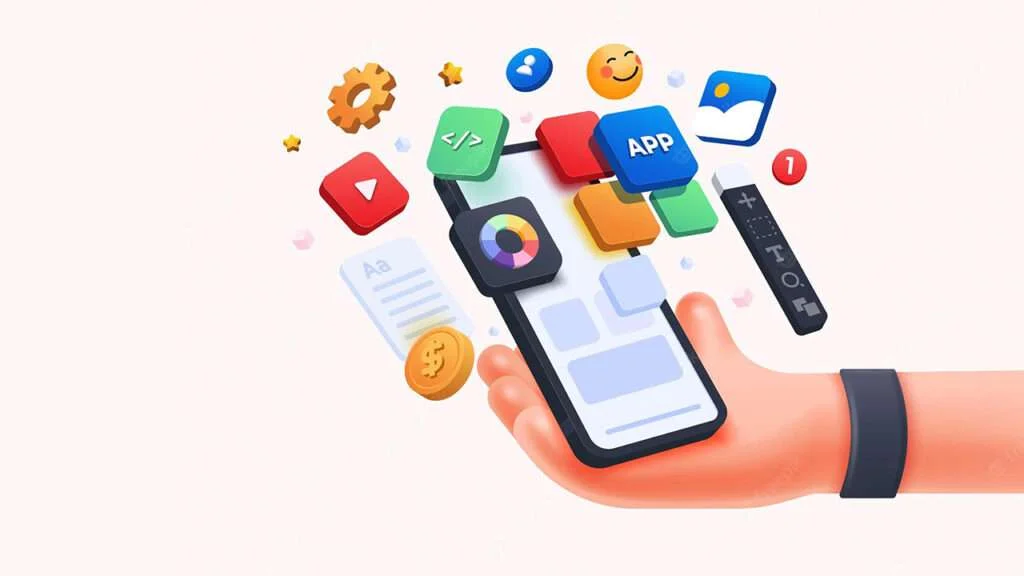Parental control apps have become essential tools in today’s digital age, empowering parents to monitor and manage their children’s online activities effectively. With advancements in technology, these apps are constantly evolving, incorporating new features that enhance their functionality and ease of use.
The latest innovations have significantly improved the effectiveness of parental control apps, making them indispensable for safeguarding children from online threats. In this article, we explore the cutting-edge features that are transforming parental control apps, ensuring that parents are better equipped to protect their children’s digital well-being.
Real-Time Activity Monitoring
Real-time activity monitoring has revolutionized the way parents oversee their children’s online activities. This feature allows parents to receive instantaneous updates on their child’s digital behavior, providing peace of mind and the ability to intervene when necessary.
Real-time alerts are a critical component of modern parental control apps. These alerts notify parents instantly if their child engages in risky online behavior, such as visiting a flagged website, downloading an unauthorized app, or attempting to bypass the control settings.
The ability to receive these alerts in real-time ensures that parents are not left in the dark about their child’s online activities and can take swift action to address any issues. For instance, if a child tries to access a restricted social media platform, the parent can immediately receive a notification and take steps to prevent further access.
Advanced AI Content Filtering: Protecting Against Inappropriate Content
With the ever-evolving landscape of the internet, protecting children from inappropriate content has become increasingly challenging. Advanced AI content filtering has emerged as a powerful tool in parental control apps, offering an effective solution to this issue by automatically detecting and blocking harmful content before it reaches a child’s screen.
Understanding AI-Powered Content Filters
AI-powered content filters are sophisticated algorithms designed to analyze and categorize vast amounts of online content quickly and accurately. These filters work by scanning text, images, and videos for potentially harmful or inappropriate material.
Unlike traditional filters that rely on a predefined list of blocked websites or keywords, AI-powered filters are dynamic and capable of learning and adapting over time. This means they can identify new threats and trends in inappropriate content as they emerge, providing a more comprehensive and up-to-date level of protection for children.
The Benefits of AI in Identifying Harmful Content
One of the main advantages of AI in content filtering is its ability to detect subtle nuances in online content that might be missed by conventional filters. For example, AI can understand the context of a conversation in a chat or social media post, allowing it to flag potentially dangerous interactions that involve cyberbullying, grooming, or the sharing of explicit material.
Additionally, AI can analyze the tone and sentiment of messages, helping to identify when a child may be experiencing emotional distress or engaging in risky behavior online.
Another significant benefit is the scalability of AI filters. As the internet continues to grow exponentially, the sheer volume of new content being generated daily is staggering. AI can process and analyze this content at a scale that would be impossible for human moderators or traditional filtering systems, ensuring that children are protected from emerging threats in real-time.
Location Tracking and Geofencing
Location tracking and geofencing are two powerful features in parental control apps that provide parents with peace of mind by monitoring their child’s whereabouts and setting boundaries for their physical safety.
How Location Tracking Enhances Child Safety?
Location tracking is a feature that allows parents to know their child’s exact location at any given moment. Using GPS technology, parental control apps can pinpoint a child’s location in real-time, enabling parents to stay informed about their child’s whereabouts.
This feature is particularly valuable in situations where a child is traveling alone, visiting unfamiliar places, or has a schedule that involves multiple locations, such as school, extracurricular activities, and social outings.
The ability to track a child’s location in real-time helps parents respond quickly in emergencies. For instance, if a child doesn’t arrive home on time, parents can immediately check their location to ensure they are safe. This feature also provides reassurance when children are exploring new environments, as parents can monitor their movements without being overly intrusive.
The Functionality and Benefits of Geofencing
Setting up Geofencing for children takes location tracking a step further by allowing parents to create virtual boundaries around specific geographic areas. These boundaries, known as geofences, trigger alerts when the child enters or exits the predefined zone.
For example, a parent might set up a geofence around their child’s school, home, or a friend’s house. If the child leaves the school premises during school hours or doesn’t arrive home by a certain time, the parent receives an immediate notification.
Geofencing is particularly useful for ensuring that children stay within safe areas and for detecting unauthorized movement. It also allows parents to enforce rules regarding where their children are allowed to go.
For instance, if a child is restricted from visiting certain areas, geofencing can alert parents if those boundaries are crossed. This feature not only helps in keeping children safe but also teaches them responsibility by holding them accountable for their movements.
Additionally, geofencing can be customized to fit the specific needs of each family. Parents can adjust the size of the geofence, set different zones for different times of the day, and even create temporary geofences for special events or trips. This flexibility ensures that the geofencing feature adapts to the changing needs of the family and provides consistent safety monitoring.
App Usage Management
Managing a child’s app usage is crucial in today’s digital era, where screen time can easily spiral out of control. Parental control apps now offer robust features for app usage management, enabling parents to strike a balance between healthy digital habits and productivity.
One of the primary features of app usage management is the ability to set limits on how much time a child can spend on specific apps or categories of apps. This helps in promoting healthy digital habits by ensuring that children do not become overly dependent on their devices for entertainment. For instance, parents can restrict the usage of social media apps to one hour per day or limit gaming apps to specific hours, such as after homework is completed.
Beyond setting limits, real-time monitoring of app usage is another powerful feature that helps parents stay informed about how their children are using their devices. Parental control apps provide detailed insights into which apps are being used, how often they are accessed, and for how long. This real-time data allows parents to identify potential problems, such as excessive use of social media or gaming apps, and intervene before these habits become detrimental.
Enhanced Reporting and Analytics
Enhanced reporting and analytics are among the most powerful tools in modern parental control apps, offering parents detailed insights into their child’s digital habits. These features enable parents to understand their child’s behavior patterns, identify potential issues, and make informed decisions to guide their online activities.
The Importance of Detailed Reports in Parental Controls
Detailed reports are essential in providing a comprehensive overview of a child’s online activities. These reports often include data on app usage, websites visited, search queries, and time spent on different devices. By reviewing these reports, parents can gain a better understanding of how their child interacts with the digital world and set up parental lock on websites or apps children use if necessary.
How Analytics Help Identify Behavioral Patterns?
Analytics play a crucial role in interpreting the data collected by parental control apps. By analyzing trends and patterns in the child’s online behavior, parents can gain deeper insights that go beyond the surface level. For example, analytics might reveal that a child tends to spend more time on certain apps during specific times of the day, or that they frequently visit websites related to particular interests.
Understanding these patterns can help parents identify both positive and negative behaviors. If a child consistently engages with educational content, parents might encourage this by providing access to more resources. Conversely, if a child is spending excessive time on non-educational content late at night, parents might consider implementing stricter bedtime controls or discussing the importance of sleep.
Utilizing Reports to Make Informed Parenting Decisions
The data provided by enhanced reporting and analytics is invaluable in helping parents make informed decisions about their child’s digital life. Armed with detailed information, parents can create a balanced approach to screen time, ensuring that their child’s online activities support their overall well-being.
For example, if a child is using educational apps effectively, parents might reward this behavior with additional screen time or by allowing access to new learning tools. On the other hand, if the reports indicate problematic usage patterns, such as excessive gaming or interaction with inappropriate content, parents can take corrective action by setting stricter controls or having a candid discussion about responsible online behavior.
Conclusion
The evolving landscape of parental control apps has brought forth a range of new features that significantly enhance their effectiveness. From real-time activity monitoring and advanced AI content filtering to location tracking, geofencing, and detailed reporting, these tools equip parents with the resources they need to protect their children both online and in the physical world.
By leveraging these innovative features, parents can foster a safer, healthier, and more balanced digital environment for their children, ensuring that they grow up with a strong understanding of responsible technology use.





